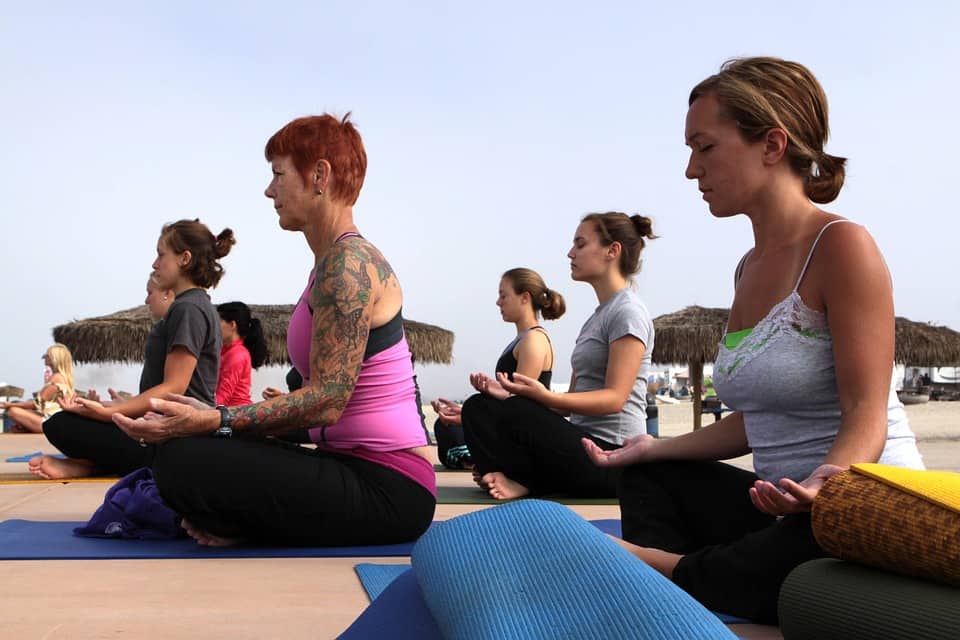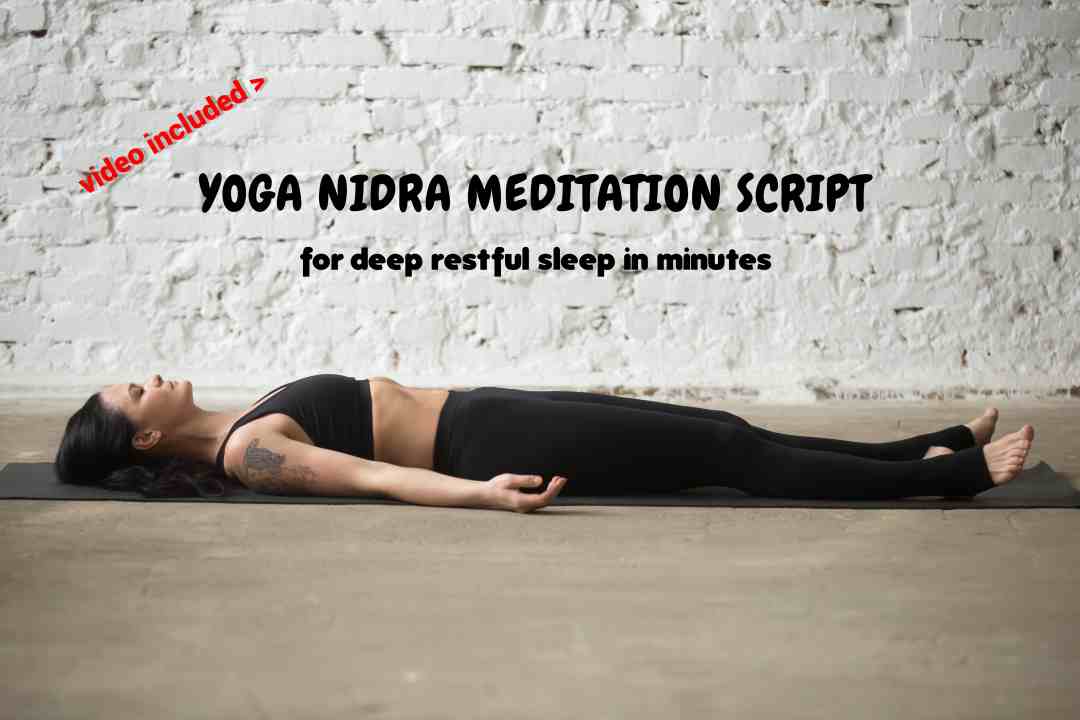Benefits of Yoga are often misunderstood!
However, I am sure you must know that Yoga is good for you. Some of you may have tried it and continue to do so.
I believe, not all of you may have a liking towards this form of discipline!
You are ignorant if you don’t realise that consistent practice of yoga nourishes you with mental, physical and spiritual good health.
By regular practice of various Yoga Poses or Asanas, you may get mental clarity and reduces stress. It also improves the functioning of your circulatory, respiratory, digestive, blood flow and hormonal structures.
You may often wonder:
Yoga is only for someone flexible or thin or fit.
You can only do yoga without injuries or chronic pain.
During Yoga, you cannot work out.
Yoga is the same as religion.
Men don’t do yoga.
Yoga is too expensive.
However, all beliefs above are untrue!
The most common FAQ’s on Benefits of Yoga are as follows:
Who can benefit from Yoga?
What Yoga can do for your body?
Can you lose weight by doing Yoga?
What are the 10 benefits of Yoga?
What benefit of yoga helps joints move without pain?
Is Yoga good for depression?
How does yoga increase strength?
What are the benefits of yoga mentally spiritually socially and physically?
Is Yoga good for over 60 or 70?
What are the benefits of Yoga for Seniors?
Here are 10 Health Benefits of Yoga:
It will soon break the myths or answer the questions you may have regarding yoga and its benefits.
Each style of yoga has its own value and every style benefits in one way or the other.
10 Health Benefits of Yoga:
-
Prevents and Eases Back Pain
-
Increases Flexibility
-
Improves Balance
-
Corrects Posture
-
Builds Bone Health
-
Increases Muscular Strength and Supports Joint Health
-
Enhances Focus, Concentration, Reduces Stress and Boosts Memory
-
Controls Breathing
-
Yoga Boosts Immune System and Reduces Inflammation
-
Improves Heart Health
What We Know About Eating to Prevent Alzheimer’s, According To A Neuroscientist
Benefits of Yoga:
1. Prevents and Eases Back Pain
Yoga Relieves Back Pain
If you have lower back pain – do not be fearful of doing YOGA!
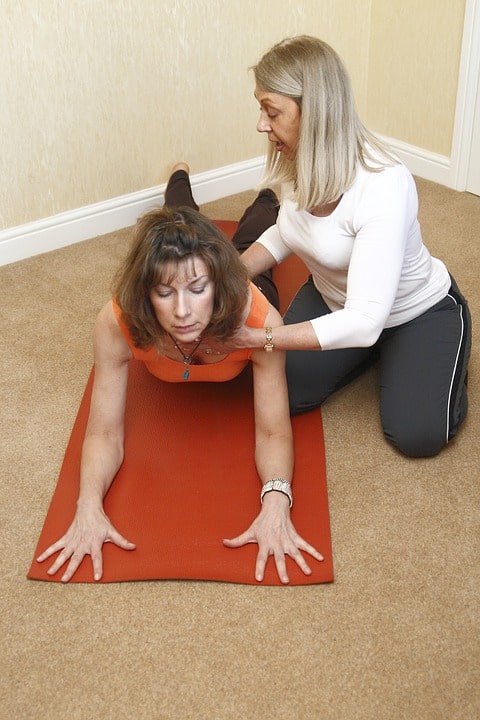
Yoga happens to be one of the most effective practice to help relieve back pain. The muscles like paraspinal muscles that help you in bending the spine, the transverse abdominis in the abdomen that helps balance your spine and the muscles to help your vertebrae are benefitted by yoga postures.
For those suffering from lower back pain – stretching is crucial. While practising yoga postures your hamstrings in the back of the thigh stretch. As a result, it decreases stress across the lower back. Moreover, yoga allows the nutrients to flow in and lets the toxins flow out, increases blood flow, and nourishes the soft tissues and muscles in the lower back.
While you are practising Yoga – the quality of your breath determines the quality of the posture. Breathing is, therefore, considered extremely important during yoga. It emphasizes a relaxed body, as a result, encourages strong blood circulation.
How does Yoga benefit your Back?
When you hold a position in yoga – it boosts the strength in the appropriate muscles. Remember, it is not to make you uncomfortable. However, when you practice yoga you require immense concentration where specific muscles are to be used throughout the body.
Back pain automatically gets reduced or is easily avoided when the back muscles are properly conditioned.
Yogic postures also help you in strengthening the back muscles.
If you are starting Yoga due to Back Pain – take the following precautions:
Firstly, consult your doctor. As per Dr Elson in case you have a spinal fracture or slipped disc – stay away from YOGA!
Start Yoga only if your doctor gives you a green signal to do so. Inform your yoga instructor about your limitations before you start yoga. Remember, there are modifications in Yogic science to the postures to ensure you do not stress your back. Moreover, you could look out for classes specifically designed to provide relief to back pain.
As per Dr Elson “By mindfully practising yoga, people can safely improve their mobility and strength while stretching tight and aching back muscles.”
2. Increases Flexibility
Flexibility is key to an easy life especially for athletes, a person working at a desk, holistic health, people with osteoarthritis.
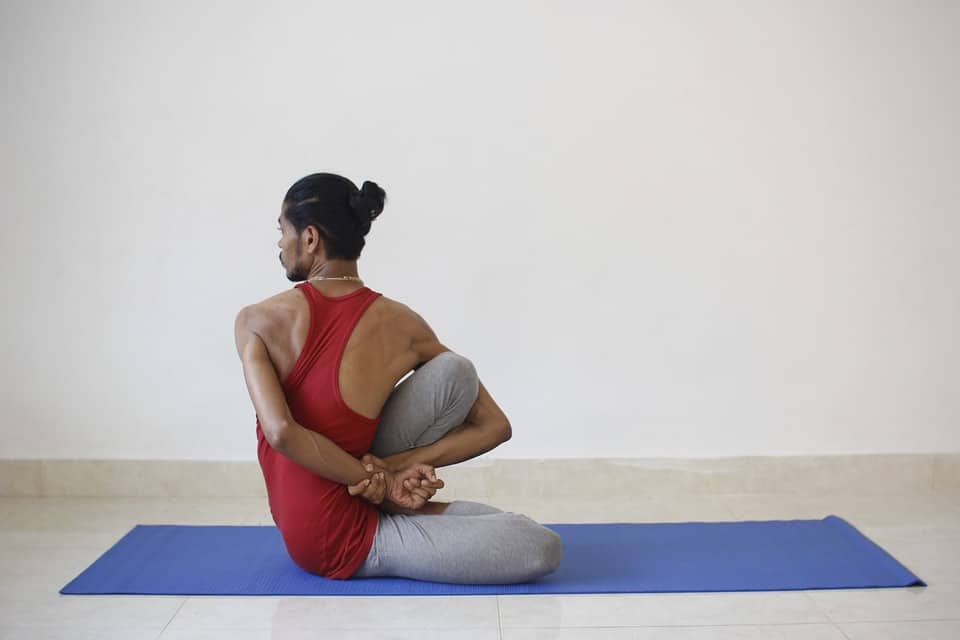
Improves FlexibilityRecent scientific studies have proven that regular practice of Yoga reduces muscle pain, improves joint flexibility and function. As you age, you could experience multiple aches and pains.

Dr Sharon KolasinskiDr Sharon Kolasinski, MD, a professor at the University of Pennsylvania in Philadelphia who teaches clinical medicine and a rheumatologist studied effects of Yoga on people. She studied people with Osteoarthritis of the knee (OA). As per her findings patients taking weekly Iyengar Yoga classes once a week for 90 minutes for two months showed significant improvements. The patients reported a reduction of pain and muscle function. Moreover, the stiffness in the joints had reduced considerably.
Importantly, the poses of Yoga were tweaked to make it easier for people who cannot bend their joints. Iyengar Yoga form allows people to use aids like props, blocks or chairs in order to maintain a balance while conducting poses.
Dr Kolansinki said, “You need to be taught by an instructor who understands your limitations.”
Athletes: It is interesting to note the entire sports teams are practising yoga as a part of their training.
Apart from keeping the bones, joints, muscles, ligaments, healthy and strong Yoga also boosts:
Flexibility
Strength
Balance
As you continue practising yoga you will notice how flexible and firm your body will be. Your body will start behaving differently, especially in regions like your hamstrings, back, shoulder and hips.
If you have fatigue or stiffness due to sitting in one position in the office or if you have arthritis – Yoga can help you build your muscles and improve your balance.
The aches and pains will start to disappear as you practice yoga on a daily basis. Additionally, Yoga is a form of workout that is enjoyable at the same time and can be practised life long.
Click here to know How to choose the yoga style right for me
A word of caution:
If you have any health issues before you start yoga consult your rheumatologist or physician to get a go-ahead to practice Yoga. Don’t forget, to clarify what are the modifications recommended for you as per your unique medical condition.
3. Improves Balance
Yoga is practised in many forms. It basically positions the body in different poses and makes sure your breathing is coordinated to the pose. It also involves meditation and relaxation exercises alongside.
When you think of balance – you tend to imagine a Yogi standing on one leg balancing himself. You could also imagine a ‘headstand’ or a ‘shoulder stand’ and think of them as the ultimate posture of balancing. However, as per Jamie Ebert: “Balance is not only about standing on one leg.”
Students focus a lot of asanas/poses – that is just one side yoga – The physical side!
However, Yoga is about Mind, Body and Breath. You achieve balance by learning holistically about breathwork, meditation and the philosophy behind yoga. You will soon notice as you practice one the others come easily to you.

Yoga and Balance
A Word of Caution:
“Yoga should not be practised while under the influence of psychoactive drugs.”
(“A psychoactive drug is a chemical substance that changes brain function and results in alterations in perception, mood, consciousness, cognition or behaviour.”)
4. Corrects Posture
You spend a huge ratio of your daily life driving cars, sitting at a desk typing on your keyboard, cooking or carrying weight. Often, your lifestyle ruins your posture.
With the passage of time, your shoulders become rounded or your spine gets curved. As a result, you subconsciously walk around with the ‘bad posture’.
Bad or poor posture results in body or neck pain, depression or low energy level or sometimes damages muscles/bones. On the other hand, a good posture makes you feel better about your self-image, makes you appear taller and thinner.
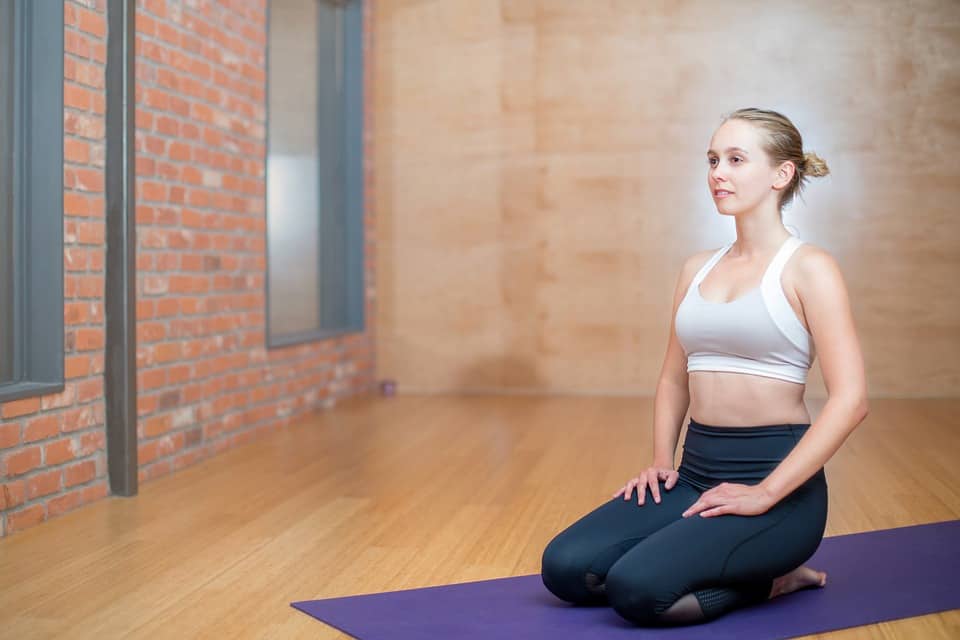
Posture
Connect between Posture and Yoga:
Builds Awareness: Yoga helps you become aware of your body. As you practise yoga regularly it enhances your body connect with the world in which you live. Most importantly, it helps you correlate between your mind and body raising your awareness to a higher level of consciousness.
Flexibility: There are yoga poses like ‘upward facing dog’ and ‘low lunge’ – mainly focusing on spinal and hip extension. The automatically open the front part of the body and prevent you from slouching. As a result, your spine is erect and is forced into flexion.
Strength: For your posture to uphold your body throughout the day – be it sitting straight, chest out, core engaged, chin up – requires your core and spine to be very strong.
Good news is that Yoga does just that!
Yoga poses like the ‘boat’, ‘locust’ and ‘cobra’ help your core muscles to strengthen eventually improving your posture.
Right posture is one of the major benefits of Yoga!
You can easily develop a good posture by practising Yoga twice a week, to begin with. See how your personality will cast a spell.
5. Builds Bone Health
As per results of a research conducted the researchers established the benefits of yoga as:
Coordination
Balance
Protection against falling (cause of osteoporotic fractures)
To determine if practising yoga poses would increase bone density – they conducted a study.
Step1: Between the year 2005 – 2015, 741 people joined this study. The average age of the participants when they joined the study was 68.
Step 2: At the beginning of the study – participants sent their hip and spines X-ray and other related lab tests.
Step 3: Yoga DVDs with instructions of yoga poses were sent to the participants. The students were to log their activity daily doing yoga online.
Step 4: As per the logs, 202 participants out of 227 were women. They practised the poses every alternate day for a span of two years. During the beginning of the study, 83% of the participants had below – normal bone density.
Result after 2 years: The X-ray scan after 2 years indicated a significant increase in bone density in the spine. The density of the hip bone too increased, however not too significant. There were no reports of bone fractures or any other injuries while doing yoga.
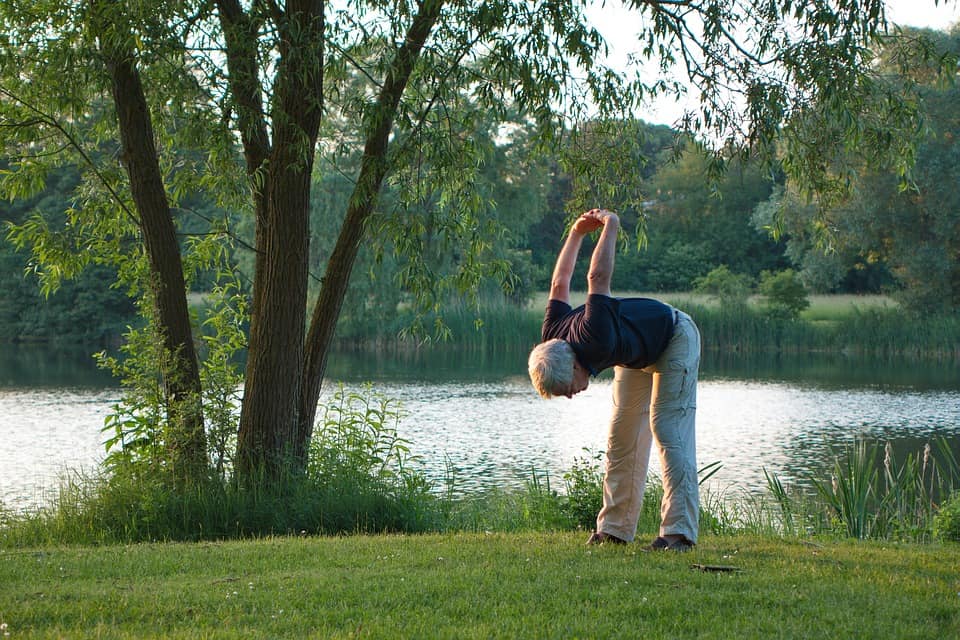
Yoga and Bone healthAlways remember, yoga is a mind and body practise. It will only benefit to its full extent if you engage totally in it.
6. Increases Muscular Strength and Supports Joint Health
A joint is essentially where two bones meet. They are mostly made up of more than two bones, ligaments, tendons, cartilage and a fluid named synovial fluid.
This fluid is key to keeping the joints lubricated and healthy. As a result, the fluid makes sure the joints don’t rub against each other by decreasing friction.
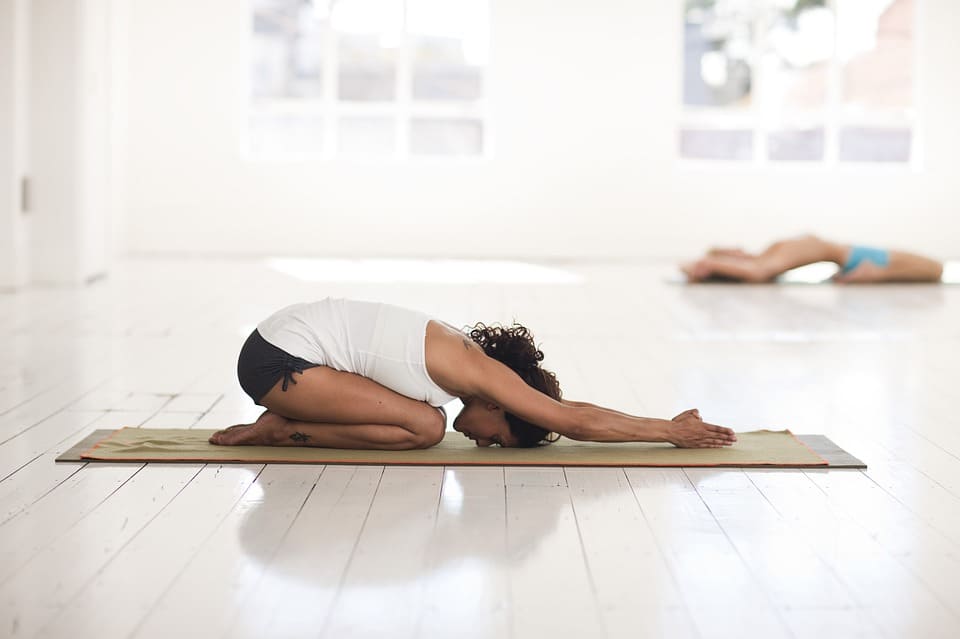
Yoga and Joints Benefits of Yoga
How do Yoga asanas help keep the joint strong:
Yoga asanas increase your Motion range:
Motion is the degree or percentage you can bend forward or backwards by your spine, or wrist or any other joint. Yoga helps in increasing the motion thereby making you fit to tie your shoelaces or pick up the pin you dropped on the floor.
By practising yoga – muscles supporting the joints get strengthed:
Gaining muscle strength is one of the biggest benefits of Yoga. Muscles take the pressure of support away from the joints. However, in case the muscles are weak they tend to put extra pressure and make the bones weak.
Increase of bone strength through Yoga:
Benefits of Yoga are incomplete without the mention of Yoga poses help in making the bones healthy. Any activity – especially Yoga poses are stress-bearing – pass a signal to the cells in the bones to shoot up their bone cell production. Whereas in the reverse, lack of physical activities signal to deposit the bone-strengthening minerals somewhere else.
Joint cartilage remains healthy due to Yoga:
Not only Yoga, but any movement or activity also keeps the cartilage healthy. Therefore, Yoga poses are most beneficial since they are designed in a manner that all cartilages in your body are used.
The Synovial fluid keeps circulating in the joints through Yoga:
Once the fluid has decreased no meditation or diet can reverse the process. Therefore, practising Yoga poses keeps the synovial fluid hydrated. With the appropriate amount of synovial helps the joints slide easily.
7. ENhances Focus, Concentration, reduces stress and Boosts memory
Science has lifted the myth that Yoga is old fashioned and irrelevant. The benefits of yoga are immense as you start understanding the relationship between your brain and yoga.
Brain Function Test and YOGA
Just 20 Minutes of Yoga every day!
It could make your brain function better.
As per the Huffington Post from a recent study conducted – 20 minutes of Hatha Yoga is what worked wonders as compared to aerobic exercise. As per researchers, it increased speed and accuracy during the brain function test.
There were 30 young college students who underwent both 20 minutes of yoga and 20 minutes of aerobic exercises. The cognitive tests were conducted both after yoga and aerobics (jogging on a treadmill).
The scores of cognitive test after yoga were better!

MeditationAs per Researcher Neha Gothe a graduate student at the University of Illinois at Urban-Champaign “It appears that following yoga practice, the participants were better able to focus their mental resources, process information quickly, more accurately. They could hold, and update pieces of information more effectively than after performing an aerobic exercise bout.”
She added “The breathing and meditative exercises aim at calming the mind and body and keeping distracting thoughts away while you focus on your body, posture or breath. Maybe these processes translate beyond yoga practice when you try to perform mental tasks or day-to-day activities.”
“Enhanced self-awareness that comes with meditational exercises is just one of the possible mechanisms. Besides, meditation and breathing exercises are known to reduce anxiety and stress, which in turn can improve scores on some cognitive tests.”
Yoga practice prevents Memory Loss
As per Mario Carrilli, director of medical and scientific relations for the Alzheimer’s Association “We know that stress damages the brain.”
As per a study – One person develops Alzheimer’s in America every 71 seconds!
15 years ago there were 4 million people suffering from Alzheimer’s. Currently, the number is 5.2 million and increasing.
The reason being – stress and lifestyle of modern times.
But, don’t you worry! There is good news too.
Scientists across the world are affirming ancient Yogic science. The unique combination of meditation, exercise, focus, breathing and relaxation while practising Yoga – is the right antidote to memory loss.

Memory Loss
How are habits and addiction formed by “Samskara”?
Yogi Idea of Samskara falls in line with you doing certain things repeatedly. As a result, create neural pathways become deeper with time.
Step1: ‘Samskara’ is the first impression or the impact of the action that you perform with an awareness of its objective. Thus, the action deposits a subtle impression in our midfield. The impression gains strength with repeated action.
Step 2: The stronger the habit – the more difficult it is to act any other way. Therefore, when your habit alters your body chemistry – it becomes ‘addiction’. Our habits subtly impact our actions, speech and thoughts.
Step 3: When these habits become so strong that they change the very way we think – it is called “Samskara.”
Is changing the brain and ‘Memory Boost’ possible by Yoga?
As per Michael Merzenich a neuroplasticity Guru, a professor for Integrated Neuroscience at the University of California at San Francisco: “Brain’s a machine that’s constantly remodelling itself based on how you use it. When we start to lose our cognitive abilities, it’s not so much a problem of the brain’s physical condition but a result of how it’s been used.”
However, you can remodel the machine called the “brain” – based on how you use it. We tend to lose cognitive abilities by how we are using our brain!
“Train the brain to make it work better!”
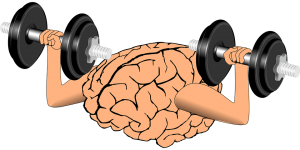
Train the BrainAs per recent study – exercise can stimulate the generation of new brain cells – as a result, they travel from one brain area to another. Thus, you can literally create a new brain altogether. It’s not possible by neuroplasticity. However, it can be done through neurogenesis.
Your new brain cells are damaged the moment you get stressed. Therefore, for you to continuously maintain and create them you need to do the following three:
Exercise your body
Work your brain
Manage stress
You will find the solution to all three through YOGA!
Memory Boost and Yoga
Kundalini Yoga (a yogic practice of devotion and chanting) – is a form of Yoga that links the movement and breath. You benefit a lot through its meditative states. The most beneficial is ‘kirtan kriya’ – a combination of meditation, posture(mudra), chanting (kirtan) and hymn (prayer or mantra).
Kirtan Kriya helps your brainpower by protecting and increasing it at the same time. You don’t have to practice Kundalini Yoga to do ‘Kirtan Kriya’.
As per Andrew Newberg a neuroscientist from the University of Pennsylvania’s Center of Spirituality and Mind famous for his studies of Tibetan Buddhist meditators:
People with memory loss practised 12 minutes of kirtan kriya daily. After doing so for eight weeks, their scans showed blood flow to the frontal lobe. Important to note is that the frontal lobe is responsible for attention, focus, concentration and memory boost.

Kirtan Kriya – ChantingAs per Larik Arenander director of Brain Research Institute at the Maharishi University of Management in Fairfield, Iowa: “Alzheimer’s is nothing more than a disorder or progressive disconnection. Yoga and meditation create coherence and connection. When we do Yoga, the experience filters down and touches our very DNA. For the majority of us, a genetic predisposition for Alzheimer’s doesn’t matter since you can change how your genes are expressed.”
8. Controls Breathing
A yogi measures the span of life by the number of breaths, not by the number of years. -Swami Sivananda
Pranayam is the other name for “Yogic Breath Control” however meditation is where you reduce your breathing as much possible, yet without force.
If you breathe 15 times a minute you will live up to 80 years approximately. However, if you breathe 10 minutes a minute you will live up to 100. It is the speed of your breath that controls the reigns of your life.
Is’nt it why dogs have a shorter life?
Pranayam and Prana
Yoga teaches you to control Prana – the vital force by practising Pranayama. Whereas, in pranayama, your breath is used to control prana.
However, don’t confuse prana with breath!
Prana is that vital emery that arises out of your lungs. It is essentially NOT your’ BREATH’. Therefore, learning how to control prana by practising pranayama you are able to channel the prana to other organs throughout your body.
Pranayama helps you focus on three main stages of respiration:
inhalation (pooraka)
retention (kumbhaka)
exhalation (rechaka)
Hence, as per yogic science its the breath retention that is Pranayama. Whereas, Inhalation and Exhalation are mere methods to retain the breath.

Pranayama
How does Pranayama effect the brain?
Step1: Retention of Breath called Kumbhaka – gives your cells an increased chance to absorb oxygen. As a result, carbon dioxide gets eliminated. This has a direct effect by calming you mentally and emotionally and is one of the hugest benefits of yoga.
Step 2: Importantly, as you retain your breath, the brain goes into a panic state because its carbon dioxide levels rise. This dilates the brain’s capillaries by stimulating them. Resultant, more capillaries in the brain tend to open to enable cerebral circulation.
Step 3: The nervous energy in your brain is built creating the neural pathways by force. Hence, your brain experiences the activation of its dormant centres and literally wakes up.
Pranayama – Mind, Prana and Breath – If you understand the correlation between the three ( mind, breath and prana) you can easily build higher awareness.
Mastery over ‘Breath Control’ or ‘retention’ improves overall health:
Cardiovascular health
Respiratory Muscle Function
Physical Strength
Mental Control
Emotional Stability
Levels of Hunger
Digestion
Energy levels
Reproductive health
Ability to regenerate body tissues at a cellular level
Pranayam is the art to teach you how to breathe less than normal (hypoventilation). Therefore, as you breath lesser it automatically increases your mental capacity, blood flow to your heart and brain, making them nourished.
It transfers haemoglobin to the cells efficiently in your body (the Bohr effect). Hence, the nervous system gets calmer and you tend to have less desire to eat.
By breathing differently from your abdomen or from your chest you can enhance the movement of blood and heat through your body vessels.
Your brain and heart need more blood and oxygen than the rest of your body. By breathing less than normal you can bring in more blood to both these parts.
9. Yoga Boosts Immune System and Reduces Inflammation
How does Yoga help in healthy Ageing?
One of the most effective methods to foster healthy ageing is yoga to aid your immune system. If you have an immune system that functions well it automatically prevents ailments. Yoga helps fight healing wounds, common infections, scavenging early cancer molecules.
Over and above western medicine you could benefit from yoga as follows:
Conditions like diabetes, cancer, heart disease that are caused due to the immune system. You can boost the immune system to prevent immune system disorders like AIDS/HIV or adrenal insufficiency. Moreover, it improves your emotional and physical wellbeing.
Inflammation and chronic inflammation:
As per researchers, Yoga reduced chronic inflammations. “Yoga applies positive thinking, visualization and concentration for health. The findings of psycho-neuro-immunology confirm the influence of thought via the immune system of each cell of the body.”
New research published in the Journal of Behavioral Medicines affirms that yoga is a good way to reduce inflammation and boost your immune system.
The weakening of the immune system often happens due to psychological stress and as a result, increases chronic inflammation.
Importantly, inflammation is a natural phenomenon present in the immune system. Moreover, it heals injuries, wounds, infections – however, if the inflammation becomes Chronic then it becomes harmful.
The research was conducted to examine if practising yoga Asanas regularly – could boost the immune system and bring down chronic inflammation. The number of participants had to practice Hatha Yoga ( a style of Yoga practice).
Scientists examined the effects of Yoga on Immune system functioning.
Results of the research:
A general pattern emerged. The pattern suggests that “Yoga can down-regulate pro-inflammatory markers. In particular, the qualitative evaluation of RCTs revealed decreases in 1L-1beta, as well as indications for reductions in IL-6 and TNF-alpha.”
The above results deducted – yoga can be practised by people at risk or for those who are already suffering from inflammatory diseases. This is because it has a beneficial effect by “enhancing cell-mediated and mucosal immunity”.
How long do you have to practice yoga to be benefitted?
The researchers do not have a conclusive answer as yet, however, the studies were conducted from 8-12 weeks frequency and practised once weekly to daily. A normal yoga class lasts for 30-90 minutes.
Most importantly, for the consistent effect, you have to practice longer time spans of yoga – especially if you want it to effect on “circulating inflammatory markers”.
10. Improves HEART HEALTH
Your heart or the cardiovascular system has trillions of cells in the body depending on it to transport numerous substances. In the process, they also remove waste from them. The cardiovascular system is the transport system of the body. As a result, they carry oxygen, nutrients, hormones and other material to the tissues. Moreover, they transport waste products like CO2 to be taken away from the body.
A Cardiovascular System comprises of three main components:
Blood (the fluid tissue used for transport)
Heart (the pump of the system)
Blood Vessels (in which the blood is carried throughout the body)
Blood: An average person has approximately 5-6 litres of blood in the body. It comprises 8% of body weight.
Heart: The heart has two separate pumps that work parallel. Valves make sure the blood flow is in the proper direction.
Blood Vessels: The network of blood vessels through which your blood travels is as long as 150,000 km (90,000 miles) (it could circle the earth two and a half times. Blood vessels are of three kinds: Arteries, Veins and capillaries.
Yoga and Cardiovascular System:
Apart from Surya-Namaskara (Sun salutations) Yogic poses are relatively static. It emphasizes stretching of muscles rather than forceful contractions. Yoga asanas increase circulation by increasing venous return without aerobic stress.
As per Sterling’s Law – by an increase of venous return it stimulates to increase cardiac output and circulation.
The inverted postures of Yoga increase the blood flow in the brain and head and help in stimulating the heart to pump more forcefully. They pose are healthy benefits of YOGA, however, you should take proper care.
If you have a history of cerebral vascular disease, High Blood Pressure, stroke, glaucoma, or heart disease you should consult a doctor before practising any of the inverted postures.

